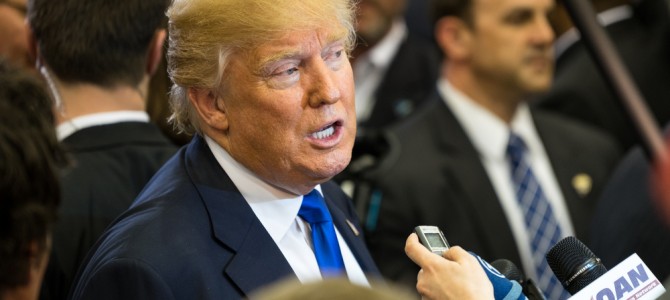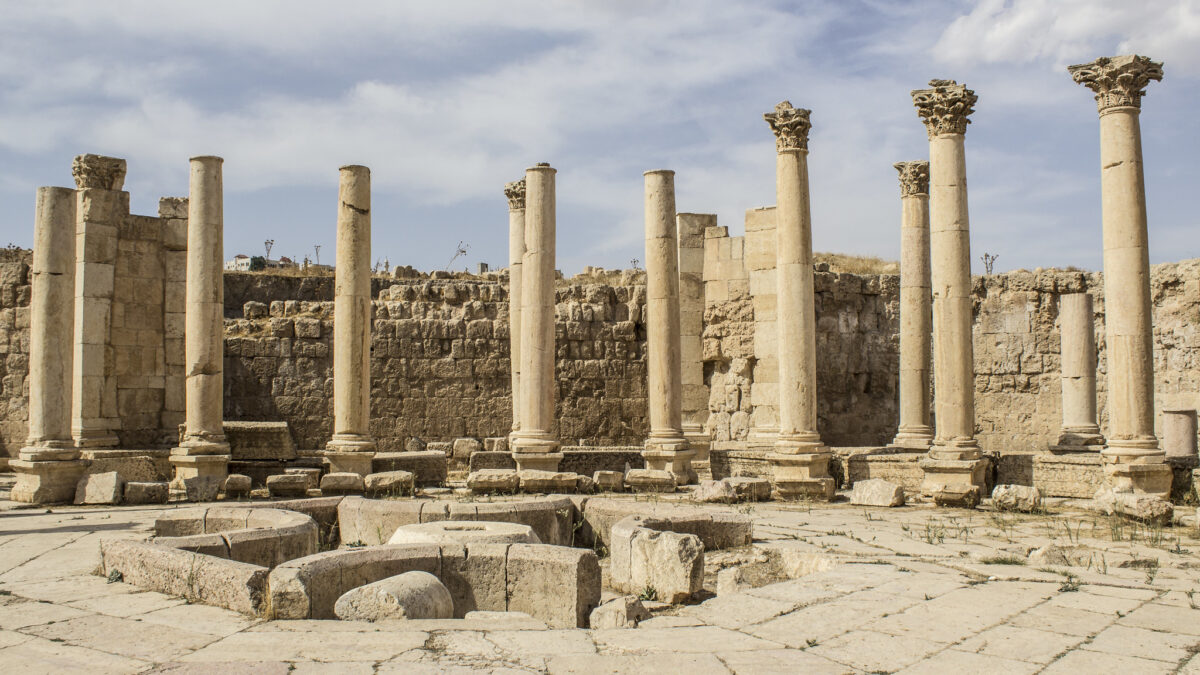
Donald Trump delivered his highly anticipated immigration plan last week, and I watched with mixed emotions. On the one hand, I have written extensively in support of many aspects of his ten-part plan. On the other hand, some of his ideas are just plainly wrong. Even some of Trump’s ideas I agree with he bases on erroneous premises.
First, What’s Good Here
First, let’s talk about the “good” of his speech, the ideas I agree with.
End “catch-and-release.” President Obama revived the “catch-and-release” policy of the Bush years, and ordered Border Patrol agents not to bother arresting and deporting illegal immigrants who came here before 2013 and did not have serious criminal convictions. For these illegal immigrants, the administration’s approach is a “permiso” to come and stay. Ending “catch-and-release” will eliminate at least one incentive for illegal border crossing.
Complete the biometric entry-exit visa tracking system. I agree, and believe using smart cards to replace paper visas is the way to go.
Stop funding sanctuary cities. The entire United States is a sanctuary for people who seek a better life by working hard and abiding by the law of the land. Our nation can only continue to be a sanctuary for all who seek freedom and escape from oppression if we continue to uphold the rule of law. Thus, I support blocking federal funding for cities that defy federal law.
Cancel unconstitutional executive orders and enforce all immigration laws. President Obama’s executive actions on immigration have sent the wrong signals to both illegal and legal immigrants. For example, after President Obama announced the Deferred Action for Childhood Arrivals (DACA) program, which in June 2012 temporarily stayed deportations of young adults brought to the U.S. illegally as children, there was a well-publicized surge of unaccompanied minors and families illegally crossing the U.S.-Mexico border.
In the meantime, the 30 million legal immigrants in the United States didn’t get any relief even though they dutifully followed the law, paid hefty fees, endured long waits, and suffered long separation from their families. By focusing his attention on illegal immigrants, the president is saying there is no reward for obeying the law and no punishment for breaking the law.
Establishing safe zones for refugees. Migration issues need to be addressed at the source. Besides the national security concerns, we must consider whether a refugee resettlement program is the best solution for a migrant crisis. The most humane way to help all Syrian refugees is to establish safe zones. A coalition of countries, including the United States and European and Arab countries, could jointly provide funding and security protection.
Turn off the benefits magnet. We should restrict immigrants’ access to welfare. A Cato Institute study shows that while cutting access to benefits may negatively impact some immigrant families, the overall impact is pretty minimal because poor non-citizens use less welfare than U.S. citizens, on an individual basis.
Choosing immigrants “based on merit, skill, and proficiency.” I not only support this idea but also have laid out the details on how to make our legal immigration simple and merit-based.
Trump’s Bad Immigration Ideas
Unfortunately, in addition to these good ideas, Trump also offered some bad ideas. The most notable one is his very first proposal: “build a wall along the southern border, and Mexico will pay for it.”
Let’s not forget the U.S.-Mexico border is about 2,000 miles long. There are major obstacles to building a wall or fence this long: first, it would not only be costly to build but also be costly to maintain. Trump insists Mexico would pay for it. Yet, curiously, Trump the tough guy told reporters he didn’t even bring up the payment of the wall to the Mexican president during his one-day visit. Later the Mexican president tweeted that they did talk about it and he made it clear that Mexico would not pay for it. So one of them is not telling the truth.
Besides the cost issue, whoever built the wall would have to negotiate with many different interest groups, such as Indian reservations, private property owners, and national parks. It would probably also require rounds of environmental studies. All this means it would take years before we could begin to lay the first brick.
Besides, a wall wouldn’t even be effective. As a person who grew up in a country that has had a wall for thousands of years (the Great Wall of China), I can tell you that a physical wall, no matter how long or how strong it is, will never be effective at stopping determined people from crossing.
Now, for the Ugly
Here comes the ugly part. Even where I agree with Trump’s ideas on immigration, his premises for them are dead wrong. For example, I agree that illegal immigrants who have committed crime should be deported immediately. It was heart-breaking to watch those parents who lost their children to illegal immigrants on stage. But I reject Trump’s premise that immigrants are roaming around America and committing “countless crimes.”
Despite popular misperceptions associating immigrants with a high crime rate, the actual data tells a different story. Scores of studies on immigrants and crime rates, some going as far back as a century, show that regardless of nationality, ethnicity, education level, or legal status, immigrants are not more likely to commit violent crimes than native-born Americans, and increasing numbers of immigrants are not associated with higher rates of crimes—quite the reverse, in fact.
Here are some of the studies well-respected economists have conducted: A 2007 study by sociologists Rubén G. Rumbaut and Walter Ewing found that “among men age 18-39 (who comprise the vast majority of the prison population), the 3.5% incarceration rate of the native-born in 2000 was 5 times higher than the 0.7% incarceration rate of the foreign-born.” A 2008 study by Richard Nadler of the America Majority Foundation concluded that high levels of immigration aren’t correlated with elevated levels of crime at the state level. Graham C. Ousey and Charis E. Kubrin investigated data from 159 cities between 1980 and 2000 and drew the same conclusion.
It’s wrong to assume that just because someone broke our immigration law it means he or she is more likely to commit other crimes. Let’s not forget that many immigrants come to the United States to better their lives, so they are less likely to ruin their economic opportunity by committing crimes.
Another of Trump’s premises is that immigration hurts American workers by lowering wages and occupying jobs. Therefore, Trump proposed to restrict immigration in order to “protect” American workers. This is the most anti-free market and anti-immigrants argument, and has been uttered many times. But no matter how many times it is repeated, it’s just factually wrong.
Immigration is good for America’s economy and for American workers in the long run. What is really holding American workers back are things we can control but have managed poorly, such as education and occupational licensing. These factors have nothing to do with immigration, but they contribute to our nation’s low labor participation rate and the bleak employment picture in America.
Trump’s speech shows that while he is not “softening” on immigration, he has made some progress towards formulating solutions. I hope he will keep an open mind, continue working on understanding the issues, and solicit ideas from others.
Today’s native-born Americans, including Trump, are descendants of early immigrants. The immigration issue and all the controversies surrounding it are mostly our own doing. We can and should make policy changes. But a meaningful immigration reform can only be carried out when we stop this native versus immigrants, or “us” versus “them,” mentality. We are all in this together.









